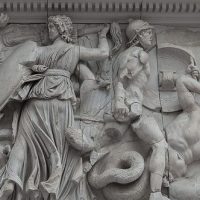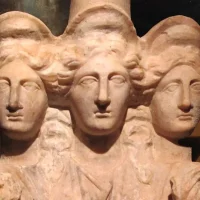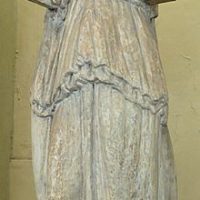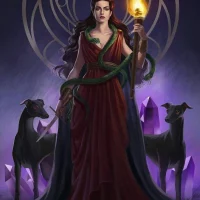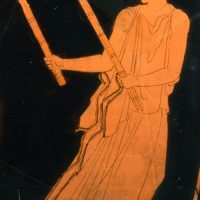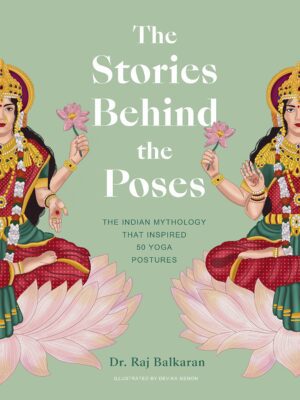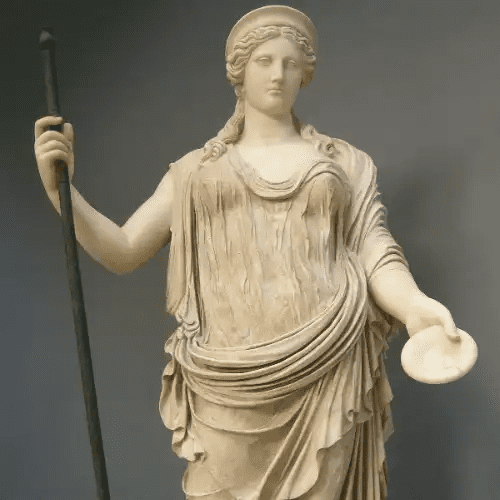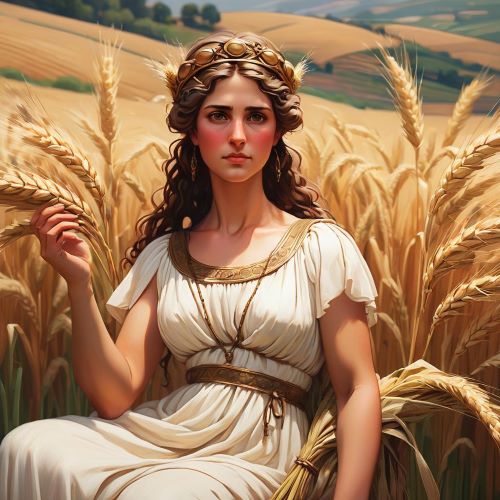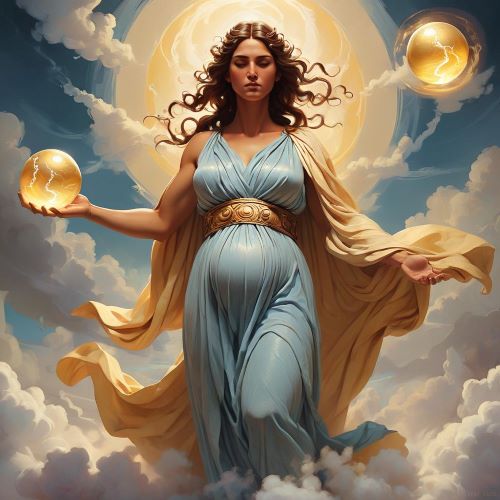Hecate : Goddess of Witchcraft
Listen
At a glance
| Description | |
|---|---|
| Origin | Greek Mythology |
| Classification | Gods |
| Family Members | Perses (Father), Asteria (Mother) |
| Region | Greece |
| Associated With | Magic, Witchcraft |
Hecate
Introduction
Hecate, the intriguing deity of Greek mythology, holds a complex role as the goddess of magic, witchcraft, and crossroads. Often depicted in triple form, she embodies various domains including light, necromancy, and sorcery. Unlike the clearly defined roles of Olympian gods, Hecate’s persona balances between benevolence and fear, acting both as a protector and a conduit to the unknown. In the rich tapestry of Greek mythology, Hecate emerges as a figure of mystery and authority, transcending the boundaries of Olympus to influence both ancient beliefs and contemporary interpretations.
Physical Traits
In the realm of Greek art and literature, Hecate emerges as a multifaceted deity, often portrayed in various forms that encapsulate her enigmatic essence. Originating in late Greek art, the depiction of Hecate Triformis, with three bodies or heads facing different directions, symbolizes her pivotal role as the goddess of crossroads. This representation underscores her ability to perceive all directions simultaneously, particularly at the junctures of transition and liminality. Holding torches, a key, and sometimes a dagger, Hecate’s iconography reflects her diverse domains and powers.
Throughout the annals of Greek artistic expression, Hecate’s portrayal evolves, mirroring her intricate nature and the breadth of her influence. In earlier depictions, she appears as a solitary figure cloaked in mystery, clutching flaming torches that signify her dominion over the night. However, as artistic interpretations progressed, Hecate assumes the form of a triple goddess, embodying the phases of the moon—maiden, mother, and crone. This trinity not only represents the cyclical nature of life but also emphasizes her omnipresence, particularly at crossroads where choices are made and paths diverge.
Accompanying Hecate in her divine imagery are loyal dogs, faithful companions associated with the underworld and the guidance they provide to travelers navigating the realms of existence. Furthermore, serpents entwined around her arms serve as potent symbols of wisdom, regeneration, and the primal forces of nature. Together, these visual motifs deepen the layers of Hecate’s symbolism, revealing her as a deity of profound significance, guiding souls through the shadows and mysteries of existence.
Family
Hecate’s lineage intricately weaves through the tapestry of both Titans and Olympian gods, enveloped in mythological ambiguity and significance. Various accounts offer divergent narratives regarding her parentage: some attribute her origins to the Titans Perses and Asteria, while others propose a lineage stemming from Zeus and the Titaness Hecate herself. This enigmatic ancestry places Hecate in a unique position, neither fully integrated into the Olympian family nor wholly aligned with the older generation of Titans.
According to the influential work of Hesiod’s Theogony, Hecate is portrayed as the offspring of Perses and Asteria, endowing her with dominion over the celestial realms, the earth, and the sea. This distinct lineage distinguishes her from the Olympian deities who ascended to power subsequent to the overthrow of the Titans. Remarkably, unlike her Titan forebears consigned to the depths of Tartarus, Hecate retained favor with Zeus, the sovereign of the Olympians. Some narratives even suggest Zeus allocated a portion of the world to Hecate, solidifying her exceptional standing within the pantheon.
Other names
Hecate’s multifaceted persona is mirrored in the plethora of names and titles attributed to her. As Phosphoros, she illuminates the path for travelers with her torches, while her Triformis aspect embodies the perpetual cycle of life, death, and renewal. Her deep connection to the underworld warrants designations like Kluchios, symbolizing her control over its gates, and Despoina, marking her authority over spirits and apparitions. Additionally, her association with witchcraft is encapsulated in titles like Hekate Triphormos, aligning her with the practice of magic and incantations.
Among her many epithets, Hecate is recognized as Phosphoros, the bearer of light, and Propylaia, the guardian at the gate. She is also hailed as Enodia, the guide of ways, and Trioditis, the deity of crossroads. These diverse appellations highlight the breadth of her powers and the depth of her influence across different realms.
Throughout the annals of history, Hecate’s name reverberates in various cultures and epochs, serving as a testament to her enduring sway and adaptable nature. From her primary name to her myriad titles like Triformis, Queen of Ghosts, Mistress of the Night, and Key-Bearer of the Underworld, each epithet unveils a facet of her divine essence, enriching the tapestry of her mythos.
Powers and Abilities
Hecate’s dominion over magic and witchcraft encompasses a vast spectrum of supernatural abilities. From conjuring storms to manipulating the moon’s phases, she wields power over the elements and celestial bodies. Shape-shifting and invisibility are among her talents, along with profound knowledge of medicinal and poisonous flora. As a chthonic deity, she bridges the realms of the living and the dead, communicating with spirits and commanding the forces of the underworld.
Her prowess extends beyond mere incantations and potions; she embodies the essence of magic itself, weaving spells and commanding the unseen forces of the cosmos. Crossroads, symbolic intersections of fate and choice, fall under her jurisdiction, granting her influence over transitions and rites of passage. The veil of night serves as her domain, where dreams and visions unfold, unseen realms await, and she stands as a vigilant guardian.
Hecate’s protective mantle extends to the vulnerable and marginalized, serving as a fierce defender of homes and individuals. Her ability to ward off malevolent spirits offers solace and guidance to those who seek her favor in times of need. Mortals and immortals alike turn to her wisdom and guidance in moments of crisis or transformation, acknowledging her as a beacon of enlightenment in the tumultuous journey of life.
Modern Day Influence
Hecate’s influence transcends the boundaries of ancient mythology, leaving an indelible mark on contemporary society. In neo-pagan and Wiccan circles, she reigns as a revered deity, celebrated for her potency and wisdom. The imagery of the triple goddess, synonymous with Hecate, pervades modern witchcraft and pagan rituals, serving as a potent symbol of divine feminine power.
Her association with crossroads imbues her with significance as a symbol of decision-making and choice, resonating deeply in the fabric of modern life. Within feminist movements, Hecate emerges as a beacon of female empowerment, embodying attributes of strength, autonomy, and adeptness in navigating life’s complexities.
The revival of interest in witchcraft and paganism has revitalized Hecate’s legacy, propelling her image into literature, art, and popular culture. From Rick Riordan’s portrayal of a formidable sorceress in the Percy Jackson series to her invocation in contemporary divination practices, Hecate’s presence continues to captivate and inspire.
Across diverse mediums, from literature to cinema, from art to spirituality, Hecate’s allure persists, captivating those drawn to the mysteries of magic and the occult. Modern practitioners of witchcraft honor her as a guiding force, while her portrayal in popular media reflects themes of feminine strength, darkness, and metamorphosis. In the ever-evolving landscape of culture and belief, Hecate remains an enduring icon, her legacy echoing through the ages as a testament to the enduring power of myth and symbolism.
Related Images
Newest addition
Frequently Asked Questions
What is lorem Ipsum?
I am text block. Click edit button to change this text. Lorem ipsum dolor sit amet, consectetur adipiscing elit. Ut elit tellus, luctus nec ullamcorper mattis, pulvinar dapibus leo.
What is lorem Ipsum?
I am text block. Click edit button to change this text. Lorem ipsum dolor sit amet, consectetur adipiscing elit. Ut elit tellus, luctus nec ullamcorper mattis, pulvinar dapibus leo.
What is lorem Ipsum?
I am text block. Click edit button to change this text. Lorem ipsum dolor sit amet, consectetur adipiscing elit. Ut elit tellus, luctus nec ullamcorper mattis, pulvinar dapibus leo.
What is lorem Ipsum?
I am text block. Click edit button to change this text. Lorem ipsum dolor sit amet, consectetur adipiscing elit. Ut elit tellus, luctus nec ullamcorper mattis, pulvinar dapibus leo.
What is lorem Ipsum?
I am text block. Click edit button to change this text. Lorem ipsum dolor sit amet, consectetur adipiscing elit. Ut elit tellus, luctus nec ullamcorper mattis, pulvinar dapibus leo.


